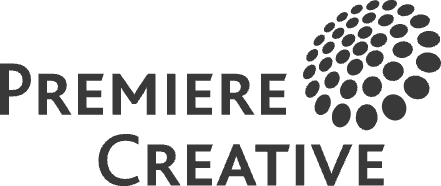Every business owner wants to know the same thing: When will I see results?
That question makes perfect sense—especially as artificial intelligence reshapes how Google, ChatGPT, and other systems surface information.
The truth is, AI SEO isn’t an overnight win. It’s a gradual process built on structure, clarity, and credibility. Just like traditional SEO, it takes time for AI systems to learn to trust your website—but when they do, the results tend to last longer and scale more naturally.
For New Jersey businesses competing in crowded ecommerce or local markets, understanding how AI SEO unfolds over time helps set realistic expectations—and keeps your strategy focused on what actually drives long-term visibility.
Quick Answer
AI SEO takes time to build. You may notice early signs of progress within the first few months—like structured data impressions or FAQ visibility—but consistent results such as AI citations, featured snippets, and measurable brand recognition typically develop over several months of steady optimization.
Understanding How AI SEO Works Over Time
AI SEO focuses on how search systems interpret and cite your content, not just how they rank it.
Instead of chasing keywords alone, the goal is to help AI models—like Google’s Gemini or OpenAI’s ChatGPT—understand what your site means, not just what it says.
That happens in three overlapping stages:
- Indexing: Search engines discover and store your structured content.
- Understanding: AI learns how your entities (topics, products, locations) connect to user intent.
- Trust-building: Your brand earns credibility through consistent accuracy, structure, and context.
Each stage builds on the one before it. When done well, AI SEO doesn’t just boost visibility—it teaches machines to treat your site as a reliable source.
Phase 1: Foundation and Setup (First Few Weeks)
Goal: Make your website machine-readable.
Before AI can cite your content, it must be able to read it clearly. That starts with structure.
Key actions:
- Run an AI Readiness Audit to identify missing schema and entity relationships.
- Add structured data such as FAQPage, HowTo, and LocalBusiness schema.
- Improve internal linking so your most important pages are easy for crawlers to follow.
- Simplify content—shorter paragraphs, cleaner headings, and fewer repetitive phrases.
What to expect:
You’ll start seeing small technical improvements, such as faster indexing or validation of structured data in Google Search Console. These aren’t major visibility wins yet—they’re the foundation that future results depend on.
Phase 2: Early Visibility (Months 2–3)
Goal: Begin appearing in structured results and rich snippets.
Once your schema is clean and your content follows a clear format, search engines can start connecting it to user questions.
Recommended actions:
- Publish question-based blogs and service pages using conversational headings.
- Validate schema through Google’s Rich Results Test.
- Track new impressions or FAQ listings in Search Console.
What to expect:
Your content may begin showing up in “People Also Ask” boxes or small featured snippets. You’ll also see confirmation that AI systems are parsing your site correctly. These early signals prove your foundation is working, even if traffic growth isn’t dramatic yet.
Phase 3: Building Trust and Recognition (Months 3–6)
Goal: Establish credibility as a trustworthy source for AI systems.
AI doesn’t just reward accuracy—it rewards consistency. By publishing structured, helpful content over time, you train algorithms to reference your site when summarizing answers.
Key steps:
- Maintain a steady content cadence (4–8 optimized posts per month).
- Strengthen topical authority through internal links and entity mapping.
- Refresh older pages to align with current data or search trends.
What to expect:
At this point, your structured data and entities begin reinforcing each other. You might see:
- Increased mentions in AI summaries or zero-click visibility.
- More branded impressions in local or conversational searches.
- Gradual improvement in organic engagement metrics.
For NJ ecommerce sites, this phase often brings the first noticeable visibility shift—proof that AI has started recognizing your brand’s relevance in its category.
Phase 4: Authority and Long-Term Growth (6–12 Months and Beyond)
Goal: Build sustained AI visibility and brand trust.
Once AI systems consistently recognize your content, your brand starts appearing more frequently in Overviews, snippets, and voice search results.
Sustaining growth:
- Keep publishing new structured content tied to your main entities (products, services, locations).
- Update high-performing pages quarterly with fresh examples or data.
- Add author bios, client proofs, and citations to strengthen E-E-A-T signals.
- Continue monitoring schema and voice visibility metrics.
What to expect:
This is where compounding happens. The more your site is referenced or verified by AI systems, the easier it becomes for them to cite you again. Visibility stabilizes, and brand recognition begins to outpace simple keyword rankings.
How to Measure AI SEO Progress
Traditional SEO relies heavily on rankings and click-through rates. AI SEO demands new ways of measuring success.
Here are the most reliable indicators:
- Structured data impressions: Check Google Search Console for schema visibility trends.
- Featured snippets or People Also Ask listings: Early signs that your structure works.
- Voice search responses: Use mobile or smart speaker tests to check conversational coverage.
- AI citations: Monitor references via tools like Ahrefs Brand Radar or ChatGPT test prompts.
- Engagement metrics: Time on page, zero-click conversions, or direct voice queries.
The key is to track progress from multiple angles—because visibility today doesn’t always mean a click tomorrow, but it still builds brand recognition.
Factors That Influence AI SEO Timelines
AI SEO progress varies by industry, website size, and competition level. The following factors play the biggest roles:
- Site authority: Older, established domains typically earn trust faster.
- Schema accuracy: Correct markup ensures AI systems interpret your content properly.
- Publishing consistency: Fresh, structured content signals ongoing relevance.
- Topic competition: Niche or local terms move faster than national ones.
- User engagement: Pages with clear answers and proof perform better over time.
For NJ businesses, local signals—like city mentions, verified addresses, and Google Business Profiles—can significantly accelerate visibility in voice and “near me” searches.
Common Misconceptions About AI SEO Speed
Myth 1: AI SEO delivers instant results.
AI may index your content quickly, but real authority requires repetition and accuracy.
Myth 2: Schema alone guarantees AI visibility.
Markup is essential, but it’s only effective when paired with strong, answer-driven content.
Myth 3: AI SEO replaces traditional SEO.
It doesn’t. AI SEO builds on the same foundations—content quality, links, and technical health—then adds the structural context machines need to interpret it.
The most successful strategies combine both approaches: optimizing for humans first, machines second.
What Early Wins Look Like
Even before major visibility shifts, AI SEO delivers measurable proof points:
- Schema validation success in Search Console.
- Better crawl coverage and faster reindexing after content updates.
- Early FAQ appearances or “People Also Ask” visibility.
- Voice search detection for local or branded queries.
These early signals confirm your site is becoming machine-readable—the first milestone toward being machine-referenced.
Why AI SEO Results Compound Over Time
Unlike traditional SEO, where rankings fluctuate, AI SEO builds semantic trust. Once AI systems associate your brand with a topic or location, they’re likely to reuse that information repeatedly.
Each piece of structured content you publish strengthens your web of entities—your topics, services, and credibility all reinforcing each other. Over time, that consistency becomes your competitive advantage.
Setting the Right Mindset
Think of AI SEO like building credit with search engines. You start by proving reliability, then earn recognition over time.
There’s no single “finish line,” but every piece of structured, useful content adds to your brand’s authority.
For most NJ businesses, the shift isn’t about ranking higher—it’s about being understood by the systems shaping search results in 2025 and beyond.
Key Takeaways
- AI SEO is a process of structure, not speed.
- Early signs—like schema validation and structured impressions—can appear within the first few months.
- Real visibility builds as AI systems learn to trust your entities and citations.
- Consistent publishing, schema accuracy, and local optimization drive the strongest results.
- The best strategy blends human-focused storytelling with machine-friendly formatting.
Ready to See Where You Stand?
If you’re unsure whether your website is optimized for AI search, start with a free readiness check.
An audit reveals how easily AI systems can understand and cite your content—and what steps can make your brand more visible in the months ahead.

